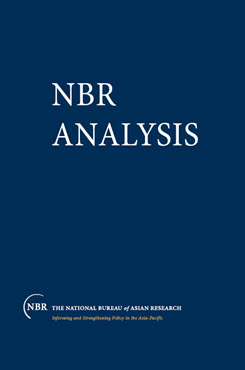The Mismatch between Northeast Asian Change and American Distractions
Ambassador Armacost’s views are noteworthy for their concern over the distractions of American attention from Asia. The Middle Eastern conflict has diverted U.S. attention from the dynamics of East Asia, both in the region’s political and its economic dimensions.
In the intermediate-range future no region is of greater consequence to the United States than Northeast Asia. It is in that region that the interests of the great powers intersect most directly. Northeast Asia is one of the most dynamic zones in the world economy, the area where the United States has the largest and most rapidly growing merchandise trade (and, coincidentally, runs its largest and most persistent deficits) and the region whose gigantic savings pool the United States regularly taps in order to finance these deficits and offset the nation’s rather paltry household savings rate. In Northeast Asia the United States confronts the most impressive emerging superpower (China), most urgent proliferation challenge (North Korea), and most dangerous residual legacy of the cold war (the unresolved Taiwan issue). The United States therefore has ample reason to pay close attention to developments in Northeast Asia.
In my view Washington is, unfortunately, not devoting attention to Northeast Asia commensurate with the region’s intrinsic importance to U.S. interests. The reasons for this are, of course, understandable. The Middle East occupies most of the available time and attention of U.S. senior officials, whether elected or appointed—and why not? The United States is engaged there in two wars, neither of which is going particularly well. The United States faces a nuclear proliferation challenge from Iran that is arguably more daunting than that presented by North Korea. The moribund status of the Middle East Peace Process affects adversely the U.S. reputation throughout the wider Arab and Muslim world. The United States also has shouldered an ill-defined yet hugely ambitious project to “democratize the Greater Middle East”—whatever that may mean. This is a sufficiently ambitious agenda that it is little wonder that other regions suffer an “attention deficit” in Washington.
Even within Asia, the attention of our policymakers has drifted a bit (again for quite intelligible reasons) from Northeast Asia toward Southeast, South, and Central Asia—regions which have large Muslim populations, porous borders, and relatively weak central governments. Still, this is a particularly unfortunate moment to be short-changing Northeast Asia in national priorities, because the region is changing dramatically in ways which will have a profound effect on U.S. interests. What follows merely mentions a few noteworthy such trends.
The Rise of China
Of these trends, the most familiar, perhaps, is the “rise of China.” Though scarcely a new phenomenon, this is one…


